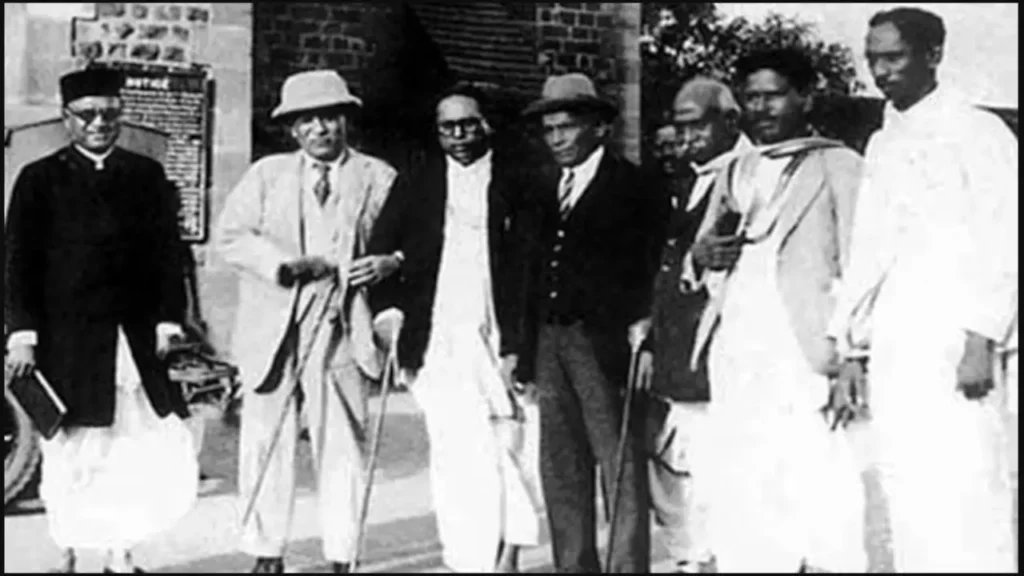Poona Pact 1932 and upliftment of ‘Harijans’
Previous Year Questions: This question has been asked in the UPSC Civil Services Exam 2025 – Prelims – General Studies Paper I, held on Sunday, 25 May 2025.
Question: Subsequent to which one of the following events, Gandhiji, who consistently opposed untouchability and appealed for its eradication from all spheres, decided to include the upliftment of ‘Harijans’ in his political and social programme?
(a) The Poona Pact
(b) The Gandhi-Irwin Agreement (Delhi Pact)
(c) Arrest of Congress leadership at the time of the Quit India Movement
(d) Promulgation of the Government of India Act, 1935
प्रश्न: निम्नलिखित में से किस एक घटना के उपरांत, गांधीजी ने, जो अस्पृश्यता का सतत विरोध करते रहे और सभी क्षेत्रों में से उसके उन्मूलन के लिए अपील करते रहे, अपने राजनीतिक और सामाजिक कार्यक्रम में ‘हरिजनों’ के उत्थान को शामिल करने का निश्चय किया?
(a) पूना समझौता
(b) गांधी-इरविन समझौता (दिल्ली समझौता)
(c) भारत छोड़ो आंदोलन के समय कांग्रेस के नेताओं की गिरफ्तारी
(d) भारत सरकार अधिनियम, 1935 की प्रख्यापना
Topic: Indian National Movement
Explanation:
In the aftermath of the Poona Pact of 1932, Mahatma Gandhi placed a renewed and determined focus on the social and political betterment of the Harijans, a term he used to refer to the Dalits or Depressed Classes. This pact emerged as a resolution to the controversy surrounding the British Communal Award, which had proposed separate electorates for the Depressed Classes—a move intended to ensure their political representation but one that Gandhi firmly opposed.
The Poona Pact was signed on September 24, 1932, in Yerwada Central Jail, Pune, between Madan Mohan Malviya and B.R. Ambedkar. This was signed while Mahatma Gandhi was lodged in Yerwada Central Jail, Pune. The agreement was signed Madan Mohan Malviya and Dr. B. R. Ambedkar and some Dalit leaders at Yerwada Central Jail in Pune, to break Mahathma Gandhi’s fast unto death.
Also read: Poona Pact 1932

Gandhi believed that creating separate electorates based on caste distinctions would deepen existing social divisions within Hindu society and weaken efforts toward unity. In protest, he began a fast unto death while imprisoned in the Yerwada Central Jail. This act of nonviolent resistance drew national and international attention, eventually prompting negotiations between Gandhi and Dr. B.R. Ambedkar, the prominent Dalit leader and social reformer. Their dialogue culminated in the Poona Pact, which replaced separate electorates with a system of reserved seats for the Depressed Classes within the general Hindu electorate—an arrangement both parties agreed upon as a compromise.
Following this turning point, Gandhi became increasingly dedicated to eradicating untouchability and promoting the integration of Dalits into mainstream Indian society. He initiated various efforts to improve their social standing, education, and access to public resources. Notably, he established the Harijan Sevak Sangh in 1932, an organization aimed at promoting social reform and supporting the welfare of marginalized communities. Additionally, Gandhi launched a weekly publication titled “Harijan”, through which he voiced his concerns, spread awareness, and advocated for the dignity and rights of Dalits.
This period marked a significant shift in Gandhi’s approach to social reform, as he sought to address the deep-rooted inequalities within Indian society while maintaining a unified national struggle against colonial rule.
Source(s): ” Comprehensive Modern Indian History : From 1707 to The Modern Times“ written by Brijesh Singh, published by S Chand.












